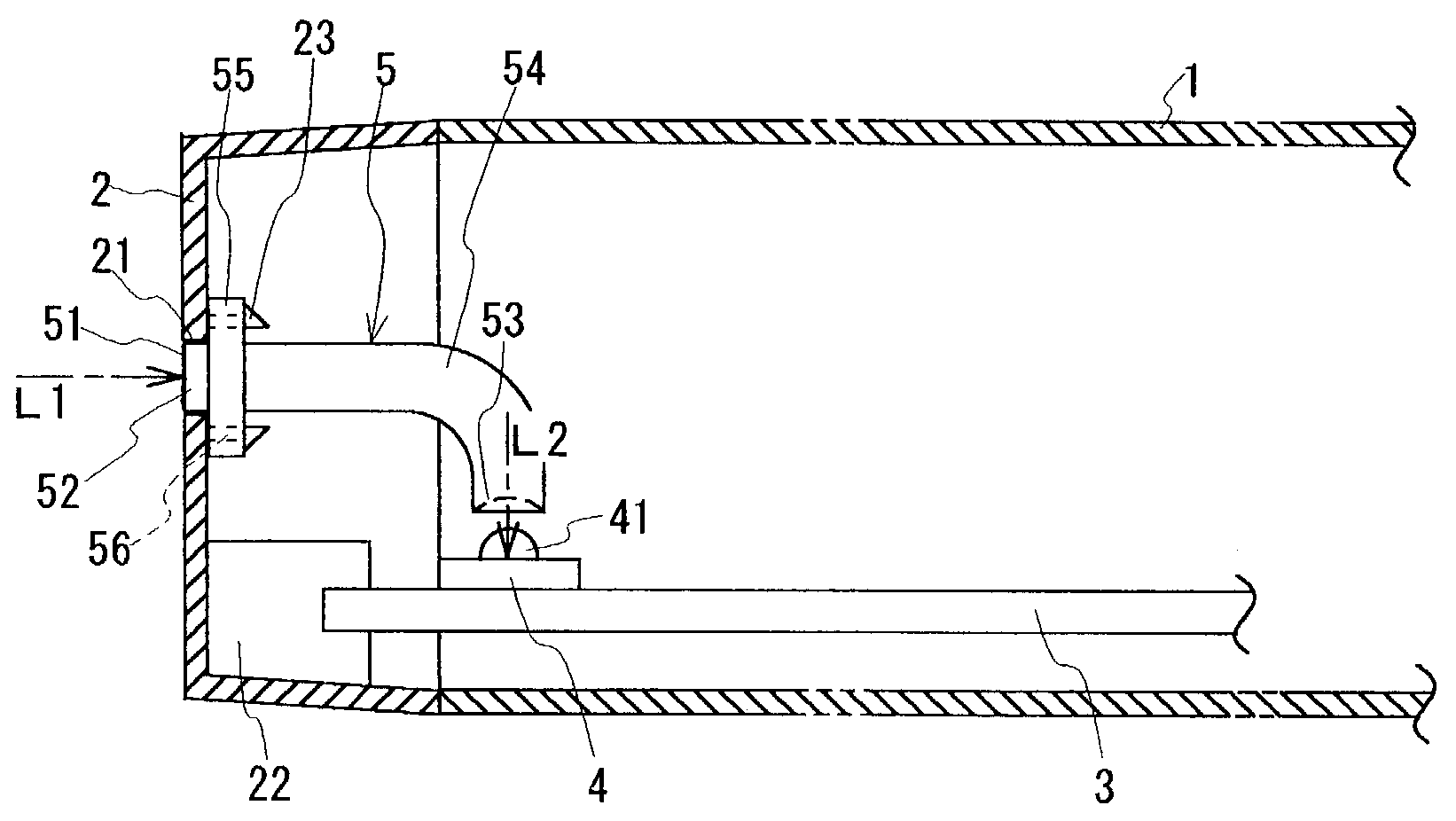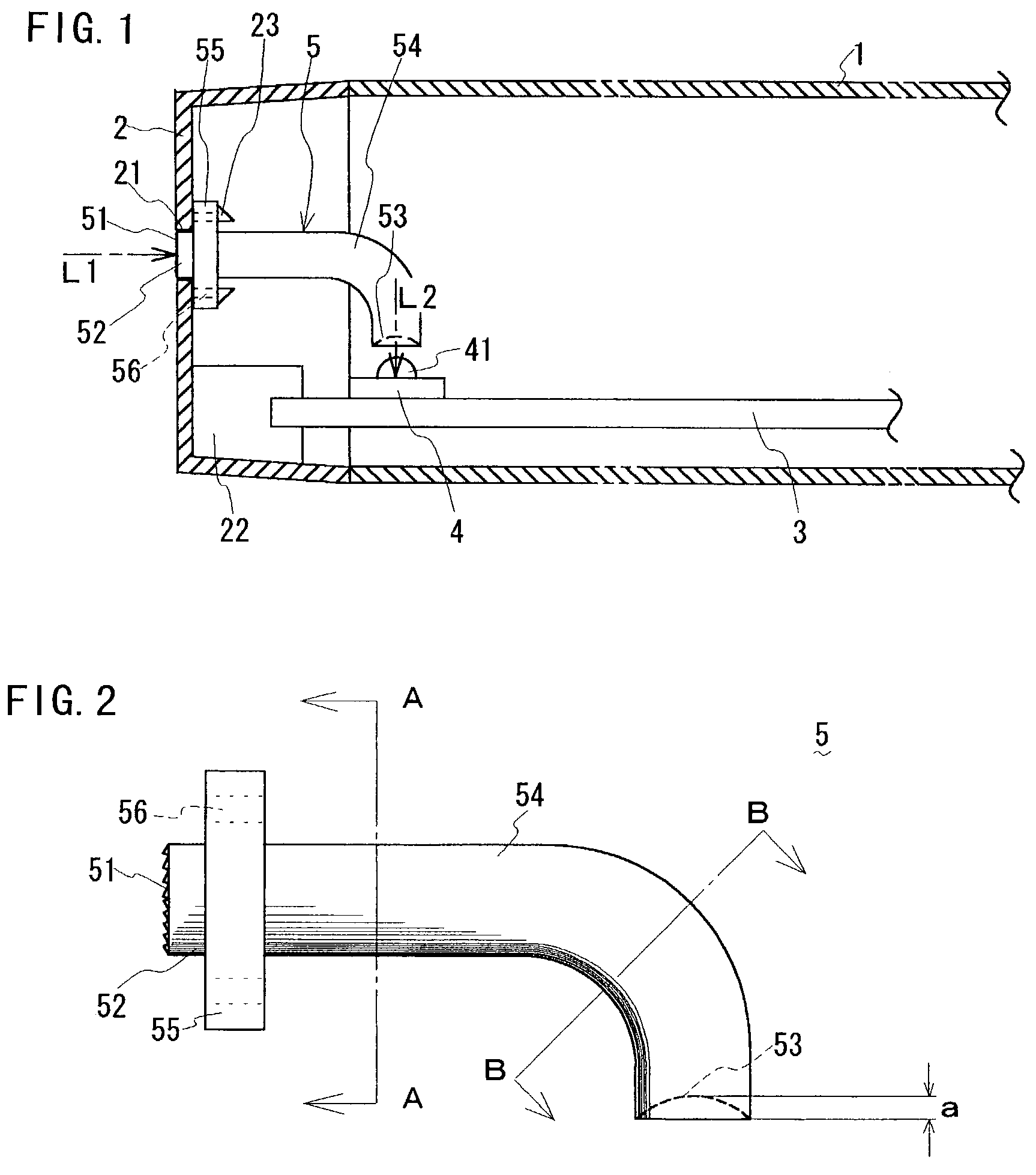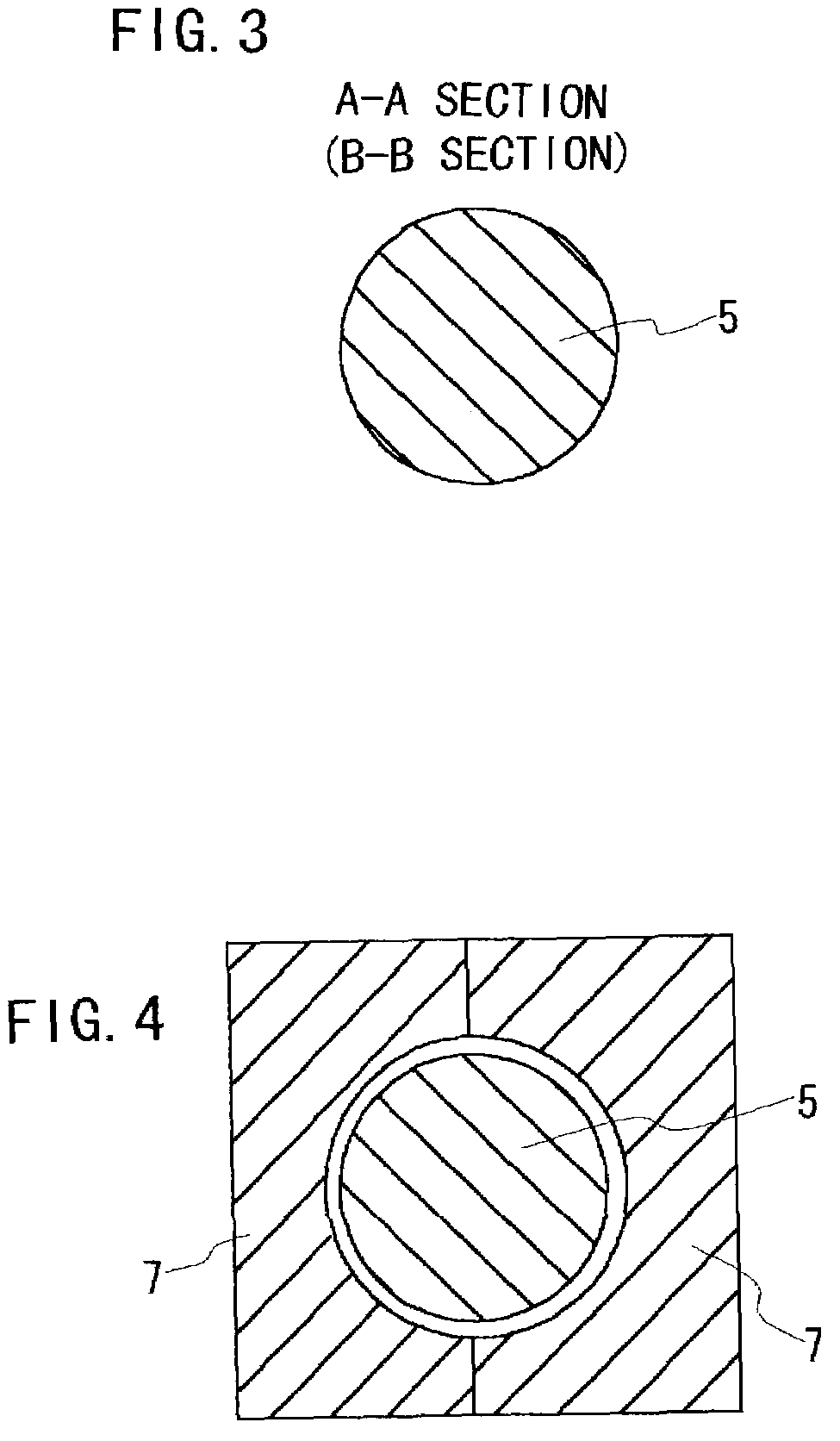Signal receiver having light guide for guiding light transmitted from remote control
a technology of remote control and signal receiver, which is applied in the field of signal receiver for remote control system, can solve the problems of inability to prevent foreign substances from entering the range within which a light can be received, the receiver cannot mount the photodetector directly on the circuit board, and the range of light can be extremely limited, so as to achieve efficient concentration and reduce the amount of projection. , the effect of enhancing light utilization
- Summary
- Abstract
- Description
- Claims
- Application Information
AI Technical Summary
Benefits of technology
Problems solved by technology
Method used
Image
Examples
Embodiment Construction
[0025]Now, a signal receiver according to an embodiment of the present invention will be described with reference to the accompanying drawings. FIG. 1 illustrates a cross sectional view of the signal receiver. The signal receiver is provided for receiving an optical signal on infrared rays or the like transmitted from a remote control and converting the optical signal into an electric signal, and it is applied to electronic machines such as a videocassette recorder. The signal receiver comprises a front panel 2 attached to the front side of an outer casing 1, a circuit board 3 disposed at substantially a right angle to the front panel 2, a photodetector 4 mounted on the circuit board 3, a light guide 5 for guiding toward the photodetector 4 an optical signal passing through a window 21 provided at the front panel 2.
[0026]The front panel 2 includes, in addition to the window 21 for receiving an optical signal, a stand 22 for holding the circuit board 3 and a couple of claws 23 for en...
PUM
 Login to View More
Login to View More Abstract
Description
Claims
Application Information
 Login to View More
Login to View More - R&D
- Intellectual Property
- Life Sciences
- Materials
- Tech Scout
- Unparalleled Data Quality
- Higher Quality Content
- 60% Fewer Hallucinations
Browse by: Latest US Patents, China's latest patents, Technical Efficacy Thesaurus, Application Domain, Technology Topic, Popular Technical Reports.
© 2025 PatSnap. All rights reserved.Legal|Privacy policy|Modern Slavery Act Transparency Statement|Sitemap|About US| Contact US: help@patsnap.com



